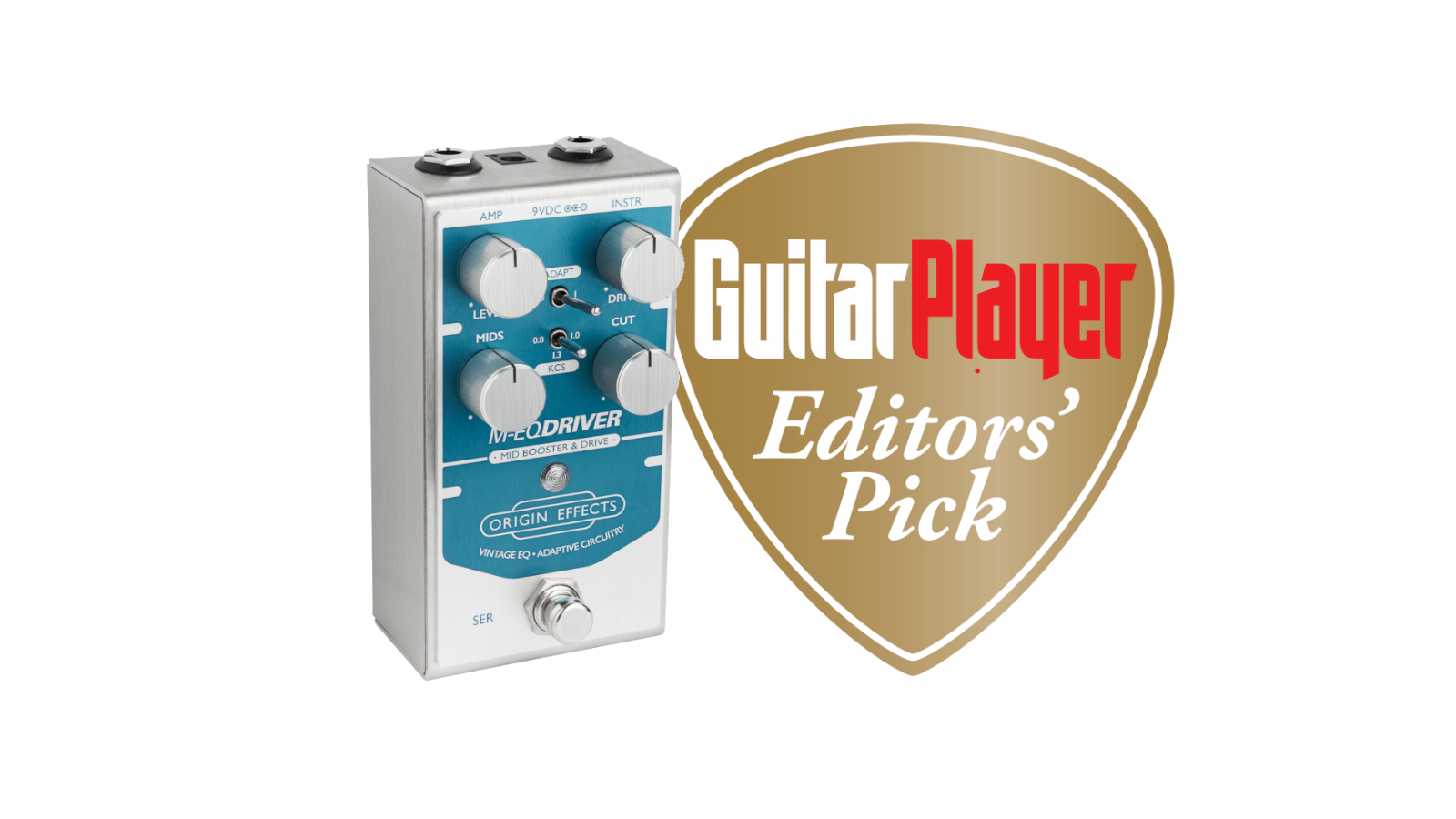GuitarPlayer Verdict
It just makes everything sound better
Pros
- +
A sweetly articulate, rich and dynamic low-gain overdrive that enhances our tone in marvelous ways
Cons
- -
The pedal initially depletes gain until you get the knobs up toward noon (something you can easily learn to work with)
You can trust Guitar Player.
British maker Origin Effects ascended quickly into the upper echelon of high-end boutique pedal makers largely with its Cali76 compressor, based on the legendary Urei 1176 studio rack compressor.
They’re back at it with the new M-EQ Driver, which channels another classic processor, the vaunted Pultec passive EQ made famous in the 1950s for its ability to sweeten and boost, in particular, a signal’s midrange.
Rather than tap the Pultec circuit purely for its frequency-adjusting capabilities, Origin takes advantage of the original circuit’s ability to drive a signal into sweet, harmonically saturated distortion.
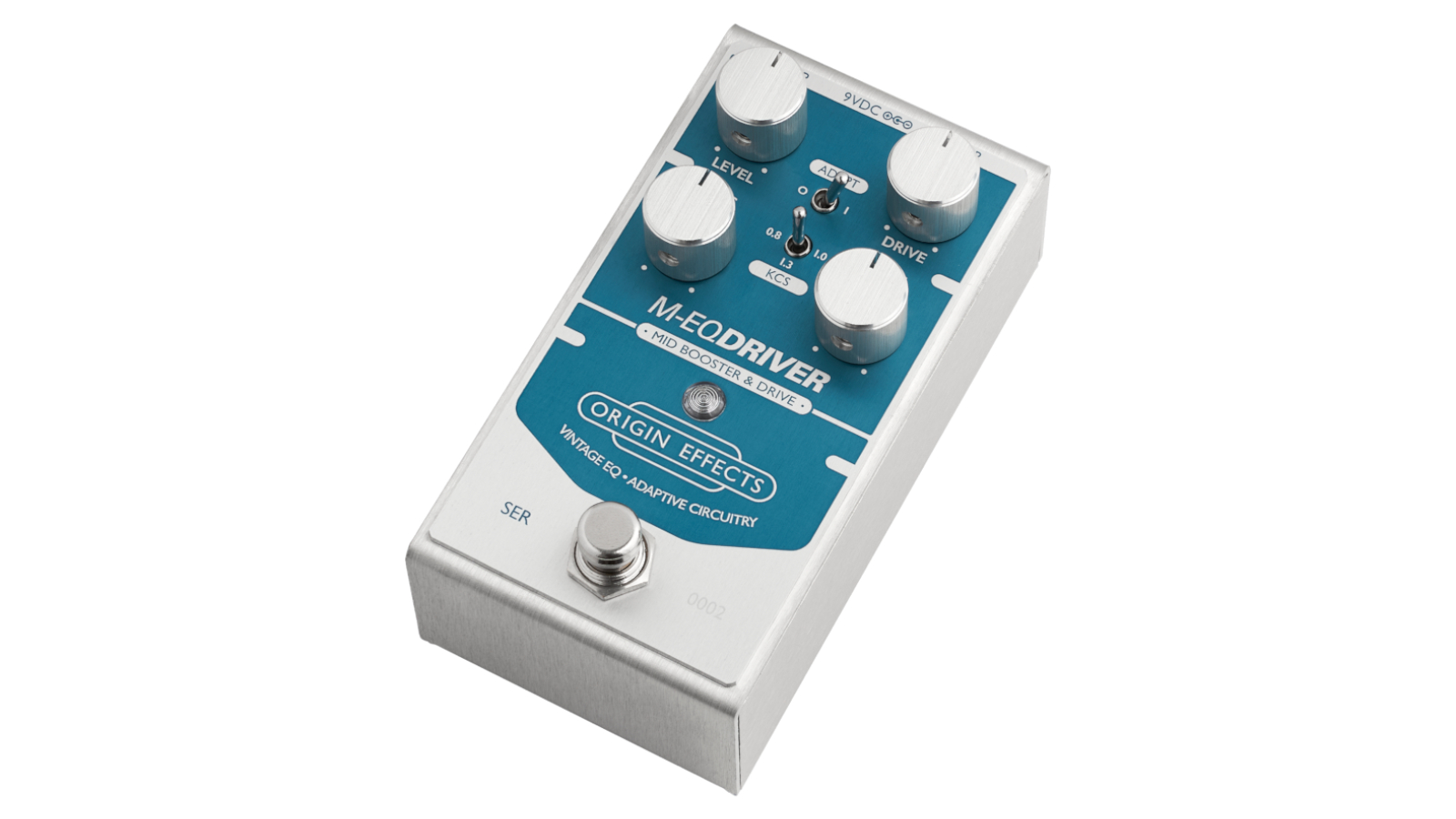
It’s a low-gain overdrive at best, but a succulent and musically enriching effect that has become as much a part of the Pultec’s magic as its EQ capabilities themselves.
Put it all together, and the Origin M-EQ Driver is an enticing mid-boost and drive pedal that speaks to some highly creative design thinking before you’ve even plugged it in.
The Origin M-EQ Driver is an enticing mid-boost and drive pedal that speaks to some highly creative design thinking
The M-EQ Driver is housed in a brushed stainless-steel enclosure topped with the simple but deceptively versatile control complement that is part of the company’s calling card.
This interface includes knobs for drive, level, mids and cut, with a two-way toggle switch for Adapt on/off, and a three-way KCS (kilocycles) switch to select three mid-boost frequency bands: 0.8kHz, 1.0kHz or 1.3kHz.
All the latest guitar news, interviews, lessons, reviews, deals and more, direct to your inbox!
The mids knob increases mid-boost within the KCS band as you turn it up. Cut rolls off high end as you turn it clockwise, while the Adapt switch works upon the cut control when engaged to reduce the amount of cut applied to the high end when you pick lightly or turn down your guitar’s volume. This allows for a seamless transition from warmer lead tones to brighter, clear rhythm playing.
The M-EQ is designed and built in England using a plethora of quality components.
Internal features of the all-analog pedal include a transformer-driven circuit like that of the original Pultec M-EQ rack unit, as well as a push-pull output stage that mimics that of the vintage EQ.
The input impedance is ultra-high to interact well with a wide range of guitar pickups, and switching is high-quality buffered bypass to help condition your pedalboard overall and play nice with long cable runs.
The center-negative adaptor between the input and output on the front of the box requires a nine-volt DC supply delivering at least 80mV, which is converted to 18V internally for optimal headroom, so converter supplies higher than nine volts are not recommended.

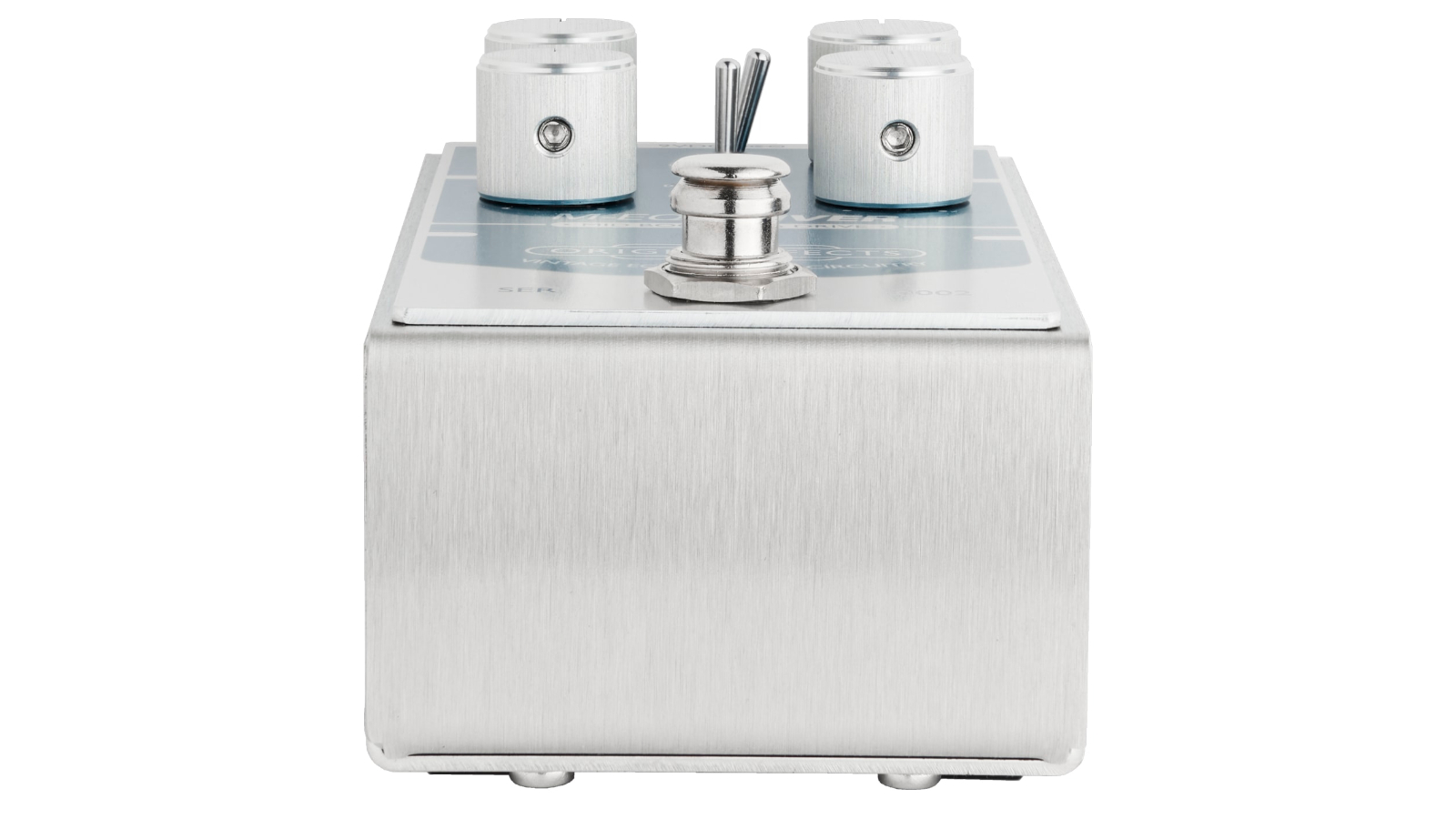
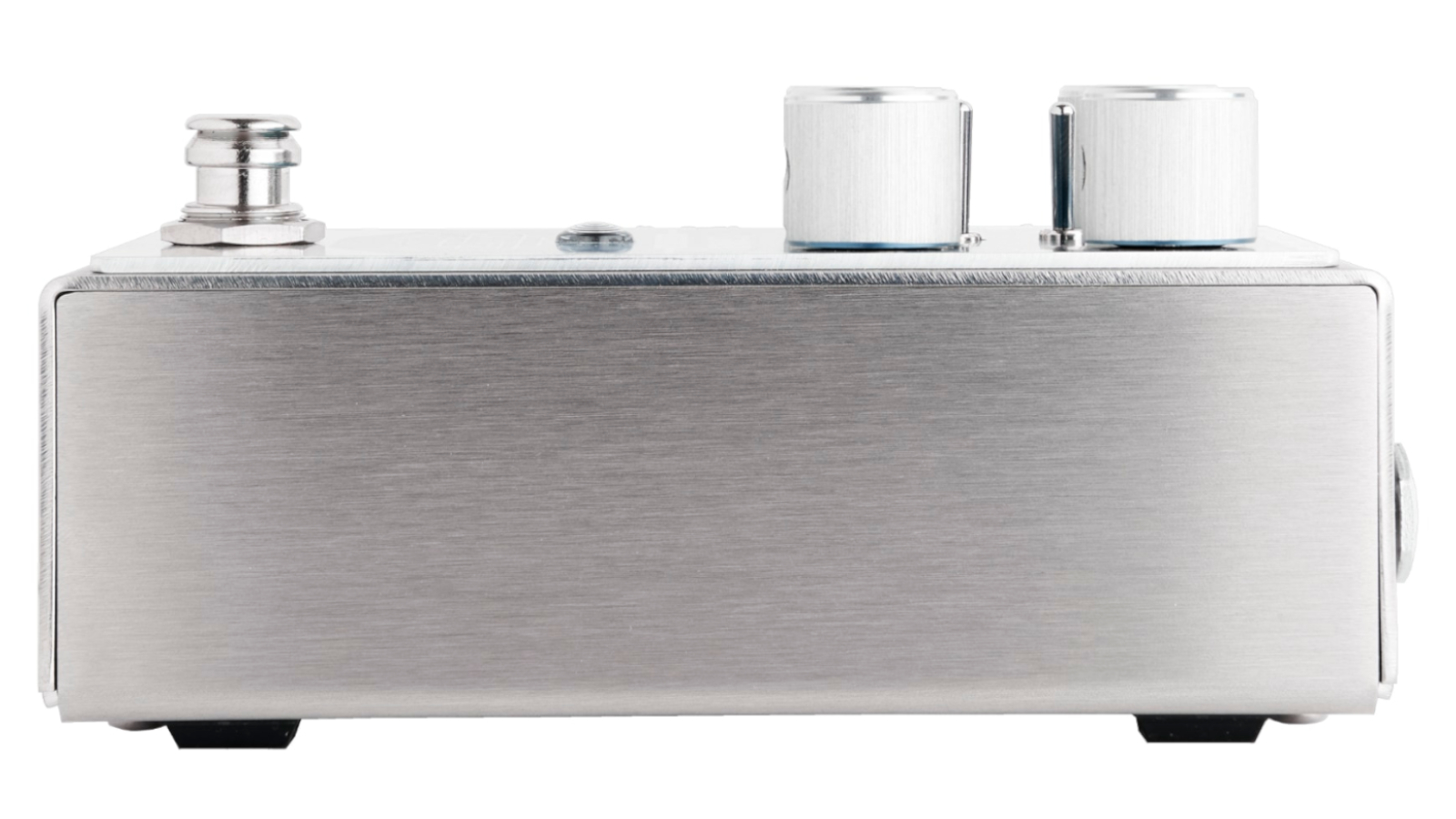
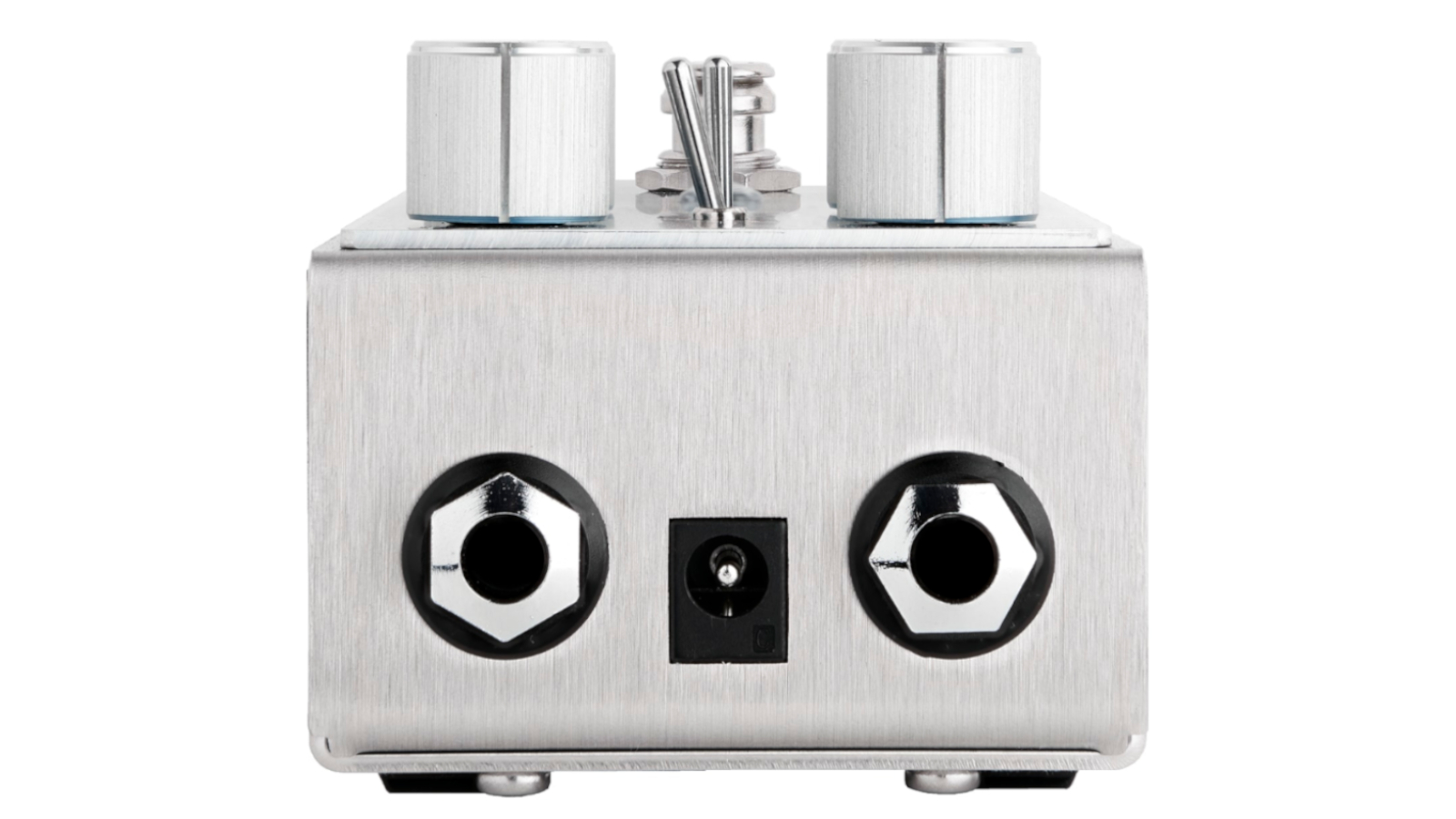
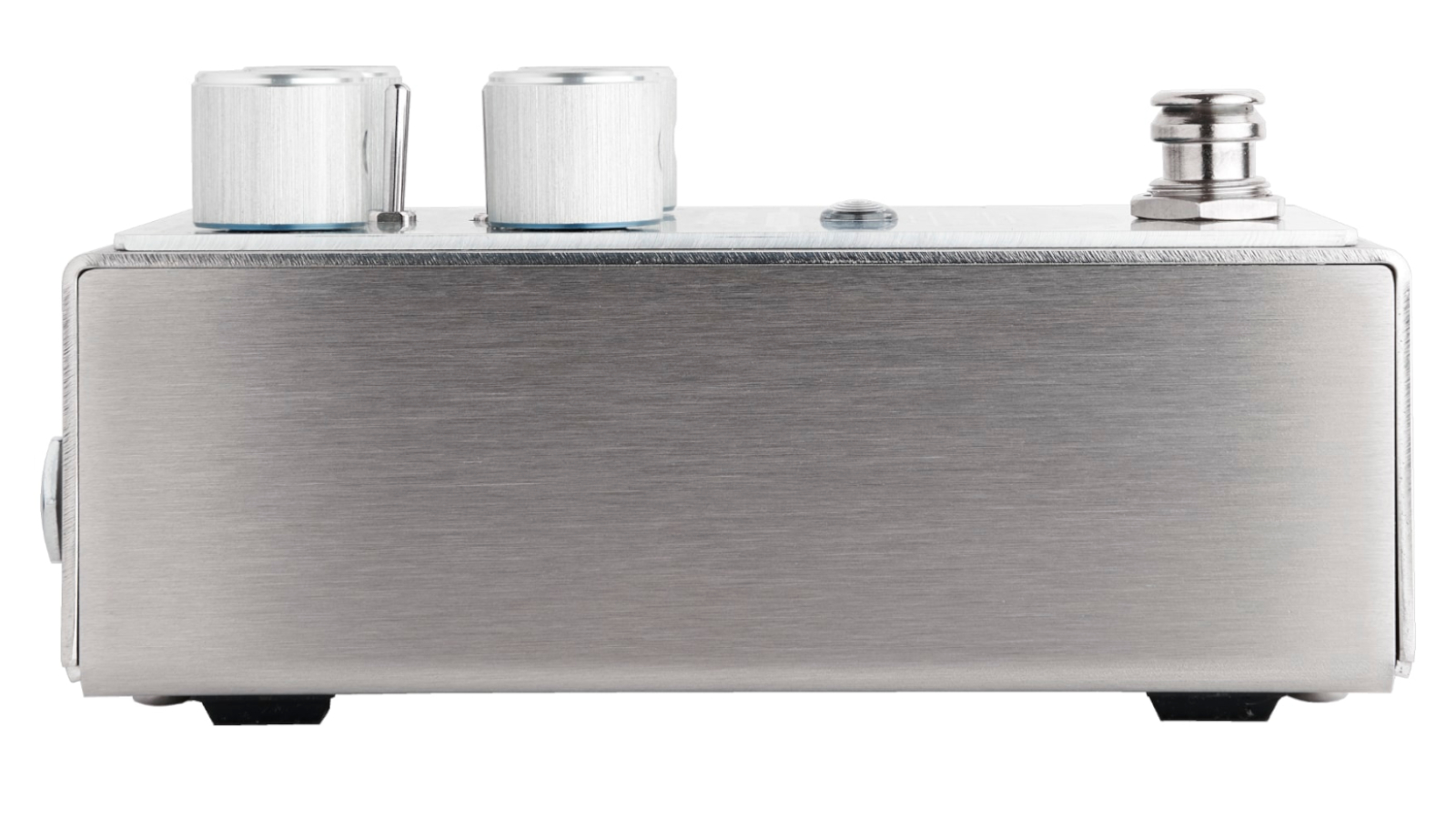
I tested the M-EQ with a Fender Telecaster and Jazzmaster, both with their traditional single-coil pickus, and a Gibson Les Paul and Firebird III with PAF-style and mini humbuckers, respectively, into a ’66 Fender Princeton combo and a 65amps London head and 2x12 cab.
It makes the electric guitar sound more alive
And, wow, what a pedal!
Perhaps the most important thing to convey is that it just makes everything sound better. And presumably that’s the principle behind adapting this hallowed studio gear to guitar-pedal form: The best vintage analog rack gear has become legendary because just running through it adds a little extra magic to your signal.
In this case, it makes the electric guitar sound more alive, as if it’s hot-wired from the strings to the amp’s output stage and even the voice coils of the speakers beyond it.
Put in less waffly terms, the M-EQ Driver delivers on the impressive ability to enhance both the articulation and the body of each guitar-and-amp combination I tried it with. Call it “clarity with grit.”

In addition to its mild overdrive, it enhanced character and personality, and simply made each guitar feel easier and more fun to play.
As already discussed, the M-EQ Driver is a low-gain overdrive at best, but that still offers a lot of toothsome, dynamic breakup with the gain maxed and the rest dialed in to voice the pedal to your taste (an effort that taps impressive versatility from the mids and cut knobs and FCS switch).
Given the feel and responsiveness of the circuit – and its aforementioned blend of crispness and girth – that level of drive usually felt enough for rock leads and power-chord work for which I might have sought a more saturated sound from other distortion pedals.
And that being said, this thing sounded equally good doing a near-unity-gain “clean-ish” boost, mild drive or going all-out.

At all settings, it’s also a very dynamic pedal, working symbiotically with your pick attack and your guitar’s volume control to deliver an expressive range of touch sensitivity. And although the Adapt feature might be subtle in some uses, it cleverly increases this capability – exponentially so, when used right.
Oddities? It doesn’t do much for your signal until you push either drive or level (and ideally both) past noon, with some mids dialed up to boot.
The first time I plugged in, I wondered why my guitar was so anemic, then realized the pedal’s gain and level were only at 10 o’clock and the mids turned off.
Turn them all up a little, and this thing sounds utterly glorious, making it an Editors’ Pick Award, both for its creative design and luscious results!
Specifications
- CONTROLS: Drive, Level, Mids, Cut; Adapt switch, FCS (midband) switch
- EXTRAS: Input and output, high-quality buffered-bypass switching, center-negative 9V DC adaptor input (external power only, min. 80mV)
- SIZE: 4.75” x 2.5” x 1.75” (excluding feet and knobs)
- BUILT: England
Visit Origin Effects for more information.
Dave Hunter is a writer and consulting editor for Guitar Player magazine. His prolific output as author includes Fender 75 Years, The Guitar Amp Handbook, The British Amp Invasion, Ultimate Star Guitars, Guitar Effects Pedals, The Guitar Pickup Handbook, The Fender Telecaster and several other titles. Hunter is a former editor of The Guitar Magazine (UK), and a contributor to Vintage Guitar, Premier Guitar, The Connoisseur and other publications. A contributing essayist to the United States Library of Congress National Recording Preservation Board’s Permanent Archive, he lives in Kittery, ME, with his wife and their two children and fronts the bands A Different Engine and The Stereo Field.
